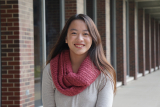Disrupting Protein-Protein Interactions in Notch1-Induced T-ALL

Background
Notch was found to be the most frequent cancer-causing gene in T cell acute lymphoblastic leukemia (T-ALL). This discovery raised hopes for anti-Notch drugs. However, these drugs had too much toxicity, like diarrhea, and even promoted cancers. The reason for these side effects is that Notch is important for keeping normal tissues healthy. How can we knock out Notch in cancer, but preserve Notch in normal cells? We believe that the answer may be proteins, called cofactors, which stick to Notch. We've noticed that some cofactors tell Notch to drive cancer. Other cofactors tell Notch to keep organs healthy. Our idea is that inhibiting the specific cofactors that tell Notch to drive cancer, but sparing other cofactors, could combat Notch without intolerable side effects. In support of our idea, we recently discovered that the cofactor Zmiz1 sticks to Notch and triggers its cancer-causing functions but not its normal functions. When we removed Zmiz1 from a leukemic murine model, the tumors shrank without damaging normal tissues or causing new cancers.
Project Goal
For the POST project, we will see what happens to human T-ALL cell lines when we cut the physical connection between Zmiz1 and Notch1. In theory, disconnecting these proteins from each other should cripple the leukemia cells. They should grow more slowly and the wiring that turns on cancer genes should be shut down. We expect to show that the Zmiz1 cofactor sends cancer-causing instructions to Notch. This information will be essential for developing anti-Notch cancer therapy without the intolerable side effects of total Notch blockade.
Mentored by Dr. Mark Chiang
University of Michigan, Ann Arbor, MI

